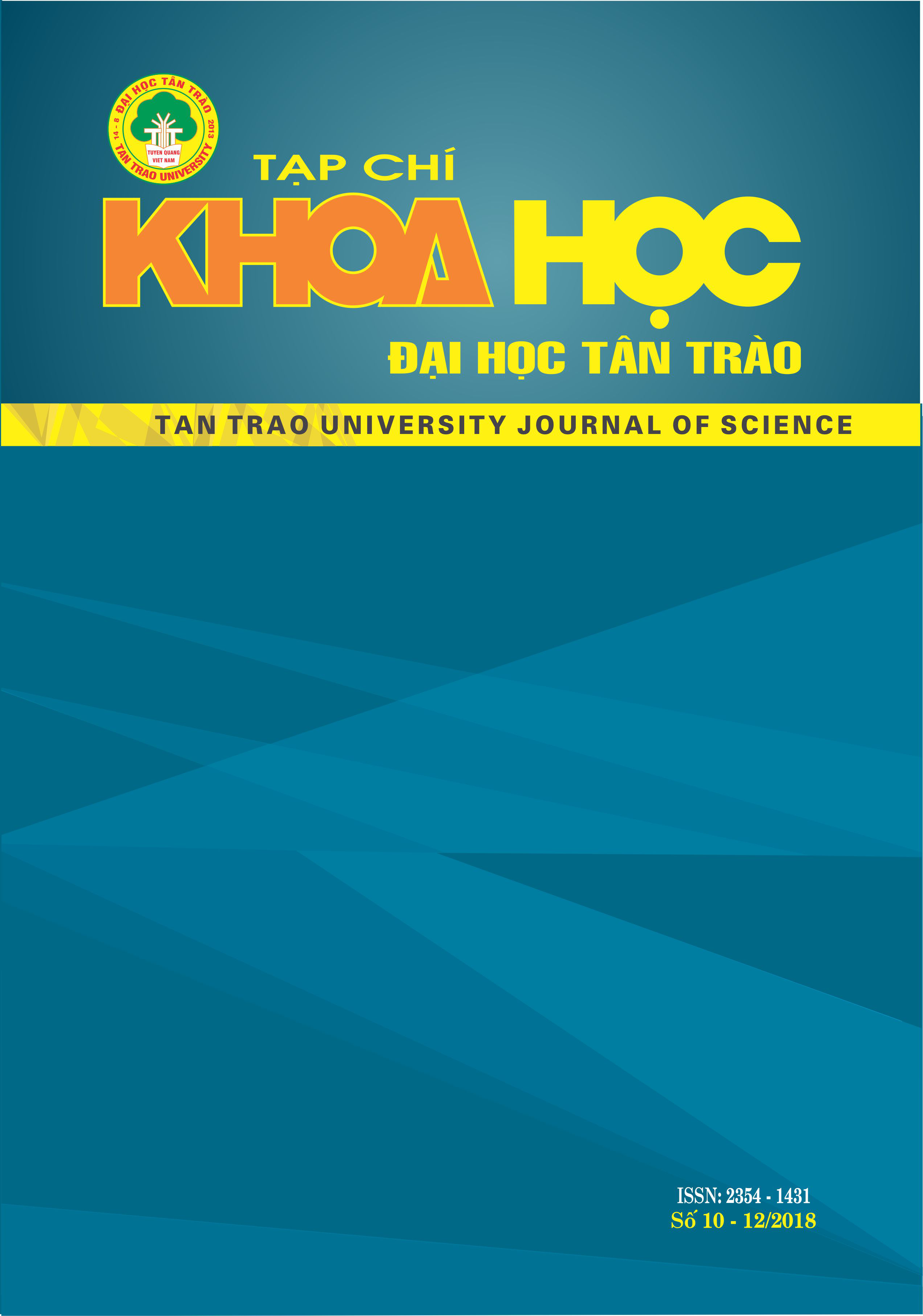Vai trò của giảng viên trong xây dựng môi trường học tập tích cực tại các trường đại học và cao đẳng
DOI:
https://doi.org/10.51453/2354-1431/2018/188Từ khóa:
Vai trò; giảng viên; xây dá»±ng môi trÆ°á»ng; môi trÆ°á»ng há»c táºp; há»c táºp tÃch cá»±Tóm tắt
Nghiên cứu này nhằm mục đích: 1) Chỉ rõ tầm quan trọng của môi trường học tập đối với người học và trách nhiệm của giảng viên trong việc xây dựng bầu không khí học tập tích cực trong nhà trường để nâng cao chất lượng giáo dục. 2) Các yếu tố vật chất và tinh thần cơ bản tạo nên môi trường học tập tích cực trong nhà trường. 3) Những yếu tố chính và nhiệm vụ của giảng viên trong việc xây dựng môi trường học tập tích cực cho người học tại các trường đại học và cao đẳng. Đây được coi là một trong những yếu tố nội lực và ngoại lực rất quan trọng nhằm tạo hứng thú, động lực cho người học trong đào tạo học chế tín chỉ tại các trường đại học, cao đẳng hiện nay ở Việt Nam và rất phù hợp với xu hướng xây dựng môi trường học tập nhân văn của nhiều trường đại học trong khu vực và thế giới.
Tải xuống
Tài liệu tham khảo
1. Blasé, J & Blasé, J. (2009). Principals' instructional leadership and teacher development: Teachers' perspectives. Educational Administration Quarterly, 35(3), 349-378.
2. Dimmock, C., & A. Walker. (2005). Educational Leadership: Culture and Diversity. Gateshead: Athenaeum Press.
3. Hoy, A. W., & W. K. Hoy. (2006). Instructional Leadership: A Learning-Centred Guide. Boston: Allyn and Bacon.
4. Hoy, R.C., & Hoy, D.A. (2003). Organization behavior. San Francisco: Jossey-Bass.
5. Hughes, Richard L. Ginnett, Robert C. and Curphy, Gordon J. (2009). Leadership: Enhancing the Lessons of Experience. Boston: McGraw-Hill.
6. Jazzar, Michael and Algozzine, Bob. (2010). Keys to Successful 21st Century Educational Leadership. Boston: Pearson Education.
7. Tanet Khamcot (2012). Tổng hợp các bài báo học thuật. NXB Nakhon Pathom-Thái Lan.
8. Krug, S. (2001). Instructional leadership: A constructivist perspective. Educational Administration Quarterly, 28 (3), 430-443.
9. Lashway, Larry. (2012). Developing Instructional Leaders. Retrieved February 10, 2013. from http://www.vtaide.com/png/ERIC/DevelopingInstructional-Leaders.html.
10. Nguyễn Thị Ngọc Liên. Tăng cường vai trò lãnh đạo của giảng viên – giải pháp nâng cao tính tích cực, chủ động và năng lực tự học của giảng viên trong nhà trường hiện nay. Kỷ yếu hội thảo nâng cao năng lực tự học tự nghiên cứu cho GVPT, trường ĐHSP thành phố HCM, (2013), pp. 125-134.
11. McEwan, E. K. (2010). Seven Steps to Effective Instructional Leadership. California: Corwin Press, inc.
12. Marsh, D. (2001). Educational Leadership for the 21st century: Integrating three emerging perspectives. Paper presented at American Education research Association (Chicago, IL, March 24-28, 1997).
13. Southworth, E.H. (2002). Leader and leadership process. Boston: Irwin / McGraw-Hill.
14. Wichan Suwanwong (2016). Xây dựng môi trường trong trường Benchamaratrungsarit 2 theo nhận thức L.D.Quang / No.10_Dec 2018|p.92-98 của giáo viên. Luận văn Thạc sĩ Quản lý giáo dục trường Đại học Bunrapha-Thái Lan.
15. Kiều Thị Bích Thủy và Nguyễn Trí (2015). Xây dựng môi trường học tập thân thiện. Tài liệu do Bộ GD-ĐT xuất bản.
16. Phạm Quang Tiệp (2013). Dạy học dựa vào tương tác trong đào tạo Giáo viên Tiểu học trình độ Đại học. Luận án Tiến sĩ Khoa học Giáo dục,Viện Khoa học Giáo dục Việt Nam
Tải xuống
Đã Xuất bản
Cách trích dẫn
Số
Chuyên mục
Giấy phép

Tác phẩm này được cấp phép theo Giấy phép Quốc tế Creative Commons Attribution-ShareAlike 4.0 .
Bài báo được xuất bản ở Tạp chí Khoa học Đại học Tân Trào được cấp phép theo giấy phép Ghi công - Chia sẻ tương tự 4.0 Quốc tế (CC BY-SA). Theo đó, các tác giả khác có thể sao chép, chuyển đổi hay phân phối lại các bài báo này với mục đích hợp pháp trên mọi phương tiện, với điều kiện họ trích dẫn tác giả, Tạp chí Khoa học Đại học Tân Trào và đường link đến bản quyền; nêu rõ các thay đổi đã thực hiện và các nghiên cứu đăng lại được tiến hành theo cùng một bản quyền.
Bản quyền bài báo thuộc về các tác giả, không hạn chế số lượng. Tạp chí Khoa học Tân Trào được cấp giấy phép không độc quyền để xuất bản bài báo với tư cách nhà xuất bản nguồn, kèm theo quyền thương mại để in các bài báo cung cấp cho các thư viện và cá nhân.
Mặc dù các điều khoản của giấy phép CC BY-SA không dành cho các tác giả (với tư cách là người giữ bản quyền của bài báo, họ không bị hạn chế về quyền hạn), khi gửi bài tới Tạp chí Khoa học Đại học Tân Trào, tác giả cần đáp ứng quyền của độc giả, và cần cấp quyền cho bên thứ 3 sử dụng bài báo của họ trong phạm vi của giấy phép.






